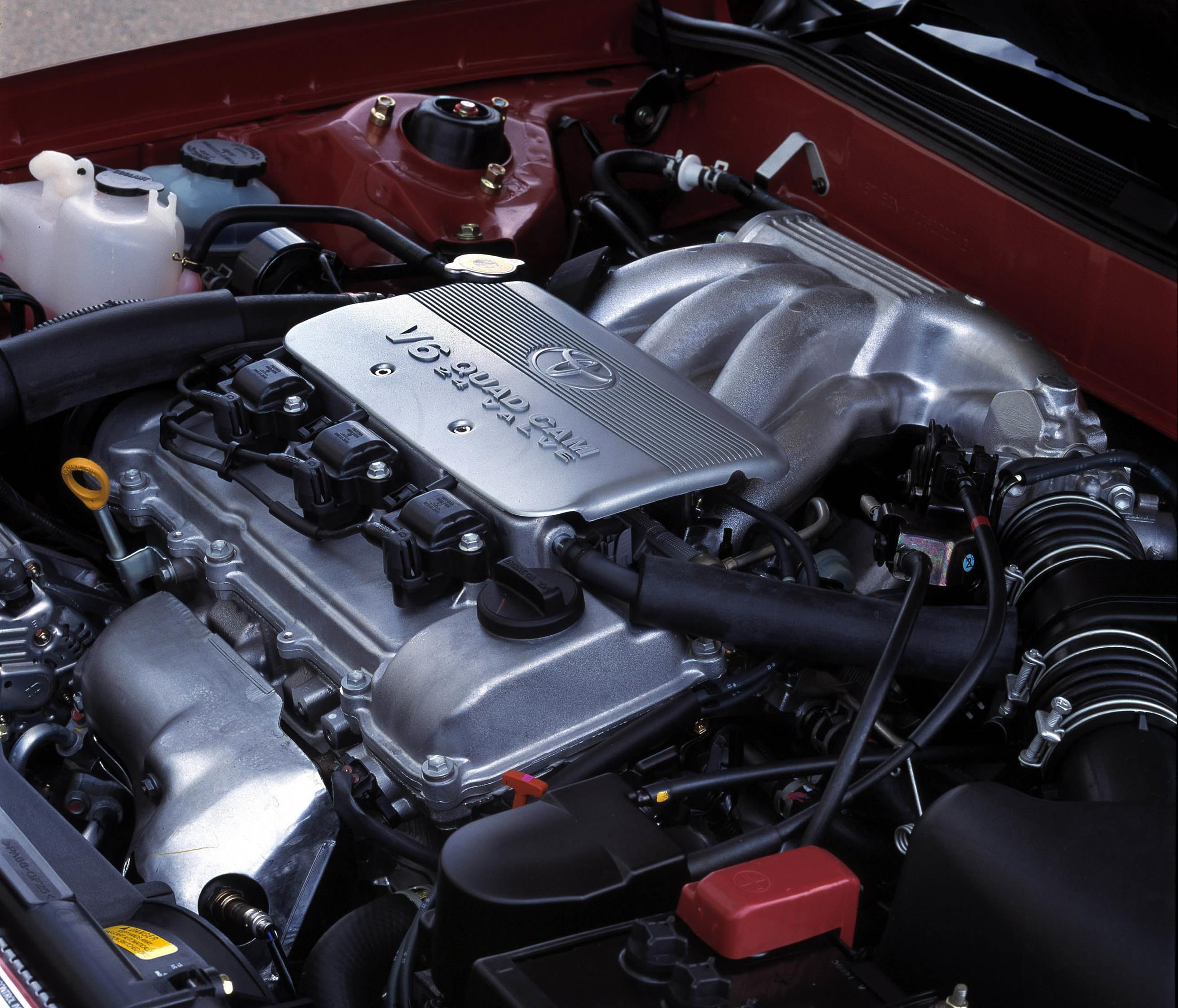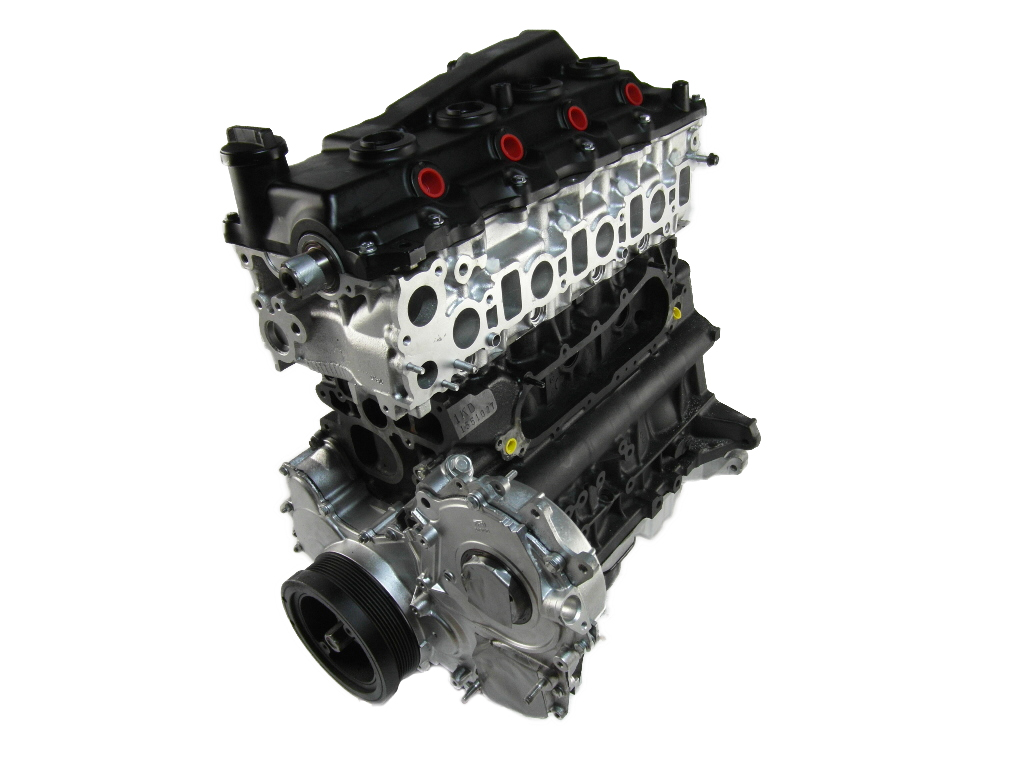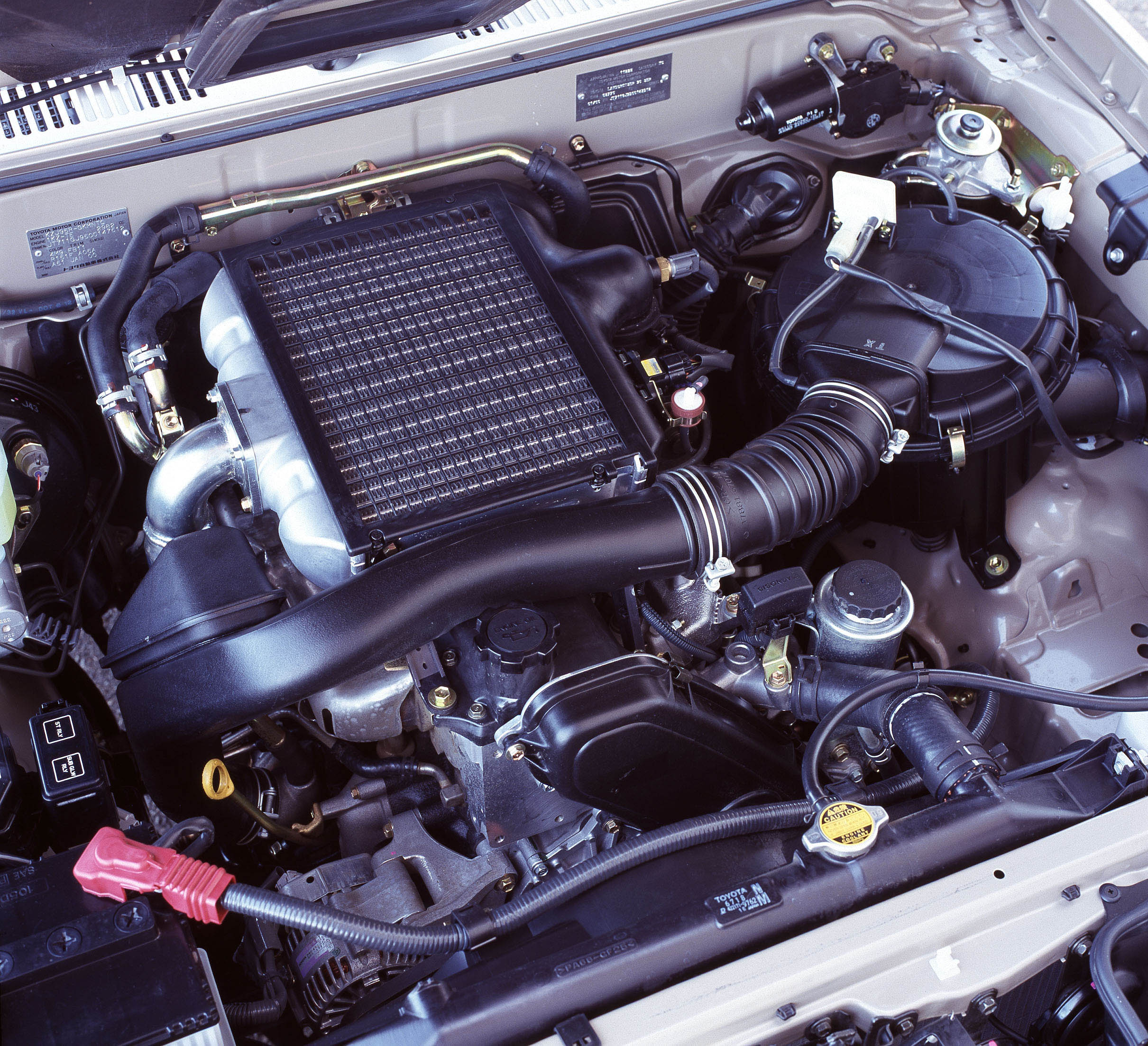 The BMW M50 and S50 were inline six-cylinder petrol engines that were available from 1990 and 1992, respectively.
The BMW M50 and S50 were inline six-cylinder petrol engines that were available from 1990 and 1992, respectively.
M50 engine
Available from 1990, the M50 was the first BMW engine to have double overhead camshafts (chain-driven), four valves per cylinder and self-adjusting hydraulic valve lifters (tappets). Furthermore, the M50 was the first production engine to have a plastic inlet manifold.
Other features of the M50 engine included a cast iron block, an aluminium-alloy cylinder head with a magnesium valve cover, fully sequential fuel injection, coil-pack ignition and Bosch Motronic M 3.1 engine management. The M50 was also the only M5X engine to have a double-valve spring valvetrain, which was considered more durable than the single valve spring arrangement on later engines.
M50TU engine
Available from September 1992, the M50TU was the first BMW engine to feature VANOS (VAriable NOckenwelle Steuerung) which enabled the timing of the intake camshaft to be advanced or retarded. For the M50TU, VANOS operated in discrete steps –
- At lower engine speeds, the position of the camshaft would be moved so that intake valves opened later for better idle quality; and,
- At higher engine speeds, the valves would open earlier for greater power and torque.
Although peak outputs were unchanged, VANOS broadened the engine’s power band.
Other changes for the M50TU engine included:
- Single valve-springs;
- Valves with thinner stems for mass reduction;
- 5 mm longer connecting rods and shorter pistons;
- Cylinder selective knock control;
- Hot film air mass sensing; and,
- Secondary ignition monitoring.
S50 engine
The S50 was BMW Motorsport’s high-powered version of the M50 engine. Compared to the M50, the S50B30 engine differed in that it had:
- Throttle plates for each cylinder;
- A variable intake camshaft (VANOS);
- Lightweight pistons;
- Graphite-coated connecting rods;
- Larger inlet valves;
- Redesigned, equal length exhaust manifolds;
- Bosch Motronic M3.3 engine management; and,
- A compression ratio of 10.8:1.
Unlike the M50, the S50 valve tappets did not have hydraulic valve clearance compensation and required regular adjustment.
Available from 1996, the S50B32 engine featured double VANOS (i.e. variable intake and exhaust camshaft timing), Siemens MSS50 engine management and a compression ratio of 11.3:1.
| Engine | Capacity | Peak power | Peak torque | C.R. | Models | Years |
|---|---|---|---|---|---|---|
| M50B20 | 1991 cc (80.0 x 66.0) |
110kW at 6000rpm | 190Nm at 4700rpm | 10.5:1 | E34 520i, E36 320i |
1990-92 |
| M50B20TU | 1991 cc (80.0 x 66.0) |
110kW at 5900rpm | 190Nm at 4200rpm | 11.0:1 | E34 520i | 1992-95 |
| E36 320i | 1992-94 | |||||
| M50B25 | 2494 cc (84.0 x 75.0) |
141kW at 5900rpm | 245Nm at 4700rpm | 10.0:1 | E34 525i | 1990-92 |
| E30 325i | 1989-92 | |||||
| M50B25TU | 2494 cc (84.0 x 75.0) |
141kW at 5900rpm | 245Nm at 4200rpm | 10.5:1 | E34 525i | 1992-96 |
| E36 325i | 1992-95 | |||||
| S50B30 (US) | 2990 cc (86.0 x 86.0) |
179kW at 6000rpm | 305Nm at 4250rpm | 10.5:1 | E36 M3 | 1993-96 |
| S50B30 (EU) | 2990 cc (86.0 x 86.0) |
210kW at 700rpm | 320Nm at 3600rpm | 10.8:1 | E36 M3 Coupe | 1992-95 |
| S50B32 (EU) | 3201 cc (86.4 x 91.0) |
236kW at 7400rpm | 350Nm at 3250rpm | 11.3:1 | E36 M3 Coupe | 1996-99 |
| E36 M3 Convertible | 1999 | |||||
| E36/7 Z3 M, E36/8 Z3 M |
1996-98 |
M50 engine: problems and faults
M50TU VANOS failure
For the M50TU engine, the single VANOS unit may fail due to deterioration of the VANOS piston seal O-ring which is made from Buna (a material with limited temperature resistance). Over time, the O-ring hardens and shrinks, causing it to lose its functional characteristics – this can cause symptoms such as a loss of power below 3000 rpm, surging around 3000 rpm, a louder idle and rough running, and rough running.
The piston O-ring lies under and provides support to a piston Teflon seal ring. Replacing the O-ring requires the Teflon seal to be removed for access. Since the Teflon seal cannot be removed from the piston seal groove without damaging it, the Teflon and O-ring seals must be replaced simultaneously. For greater longevity, the Buna O-ring can be replaced with an O-ring made from Viton.
M50TU VANOS rattle
VANOS rattle generally occurs from 1800 to 2200 rpm, but may also occur at idle. The rattle is caused by wear in the variable valve timing helical (slanted) gears which are found on the camshaft, camshaft sprocket and splined shaft which attaches to the VANOS unit. Wear of the helical gear allows the camshaft to have lash movements that engage the splined shaft axially; the axial play that causes the rattle is found on the helical gears and the splined shaft bearing.
Removing the splined shaft bearing axial play significantly reduces the VANOS rattle. The splined shaft bearing is made of a thick washer and two thrust (roller) bearings. The washer and two thrust bearings are encased in a ring and two outer flat washers; the complete bearing is housed inside a splined shaft cavity that is closed with a threaded cover.
Since the thrust bearings and centre washer have tight tolerances, they cannot be replaced. To fix, a replacement VANOS piston bearing ring is manufactured to the same specification as the original bearing ring but with a shorter height (manufactured to a tight height tolerance). The bearing ring is a difficult and expensive component to manufacture since it is made from a special bearing steel, hardened and its surfaces ground. For further information, see http://www.beisansystems.com/procedures/single_vanos_rattle_procedure.htm.
M50 engine problems
For the M50 engine,
- Overheating may be caused by a defective water pump or thermostat –
- For the water pump, the plastic impellor can become brittle and crack. To prevent this, a water pump with a metal impellor can be installed. For later pumps, BMW used a higher-grade plastic; and,
- The plastic thermostat housing can become brittle and crack; aluminium thermostat housings are available as a replacement.
- The hydraulic lifters can wear out, producing noisy and inefficient valvetrain operation. This can be detected by a ‘ticking’ noise from the engine.
- On high mileage engines, the timing chain can stretch, causing poor running and a ‘clagging’ noise. Replacement of the timing chain tensioner may fix this issue and alleviate the noise.
S50 engine: problems and faults
S50 VANOS failure
As in the M50TU engine, failure of the VANOS unit in the S50 engine can produce symptoms such as a loss of power below 3000 rpm, surging around 3000 rpm, a louder idle and rough running, and rough running. For the S50B30 engine, VANOS problems include:
- Due to heat, the VANOS intake rod seal – made from Buna rubber – will, over time, harden, shrink and fail. Since Buna rubber has limited heat resistance, it should be replaced by a Teflon rod seal (preferably) or, as an alternative, a Viton rubber rod seal.
- The VANOS intake piston seal – which consists of a Teflon ring and backing Viton rubber ring – can fail due to uneven wear of the Teflon ring. This may be caused by:
- The rod seal failing (described above) and causing oil to leak from one of the oil chambers and the oil chamber on the opposite side of the seal pushing against it; or
- The piston seal cavity being too wide and providing space for the seal to tilt – this is caused by a paper gasket that is fitted during assembly to prevent the piston parts from spinning. After assembly, however, the gasket has no function. Removing the paper gasket restores the piston seal cavity to the correct width.
- The VANOS solenoid O-rings – made from Buna rubber – may harden, shrink and cause external oil leaks. To fix, the O-rings should be replaced by solenoid O-rings designed for the S62B50 (E59 M5) engine which are made from Viton and have multiple facets to divert oil flow away from the O-ring and prevent it from shredding under the high oil pressure.
The VANOS unit has multiple O-rings for static sealing which – with one exception – are made from Viton. Over time, these O-rings may compress (flatten) and require replacement. - For the S50B32 engine, there are two exhaust piston seals which consist of a Teflon ring with a backing Viton O-ring. Wear of the Teflon and/or compression of the O-ring, can cause the seal to become loose and not function properly. To fix, the Teflon rings can be thickened and Viton O-rings used which are less susceptible to compression.
S50 VANOS rattle
The causes and symptoms of VANOS rattle for the S50 engine are the same as described for the M50 engine, above. To fix VANOS rattle in the S50 engine, the outer ring can be replaced with a ring that is made of bearing steel that has been hardened and ground to bearing standards – its height can be controlled to provide a tight axial bearing fit. Furthermore, outer flat washers can be combined to provide the necessary height for a tight fit.
A diaphragm spring incorporated in the intake and exhaust sprockets also affected VANOS rattle since this spring loads the sprocket rotational movement to dampen quick movements. Since the spring weakens over time, replacing it with a new one is often needed to completely fix the rattle. Since the spring is not available as a separate part for S50 engines, springs for the S54 and S62 engines are used instead; the S62 diaphragm spring is thicker and regarded as more durable.


